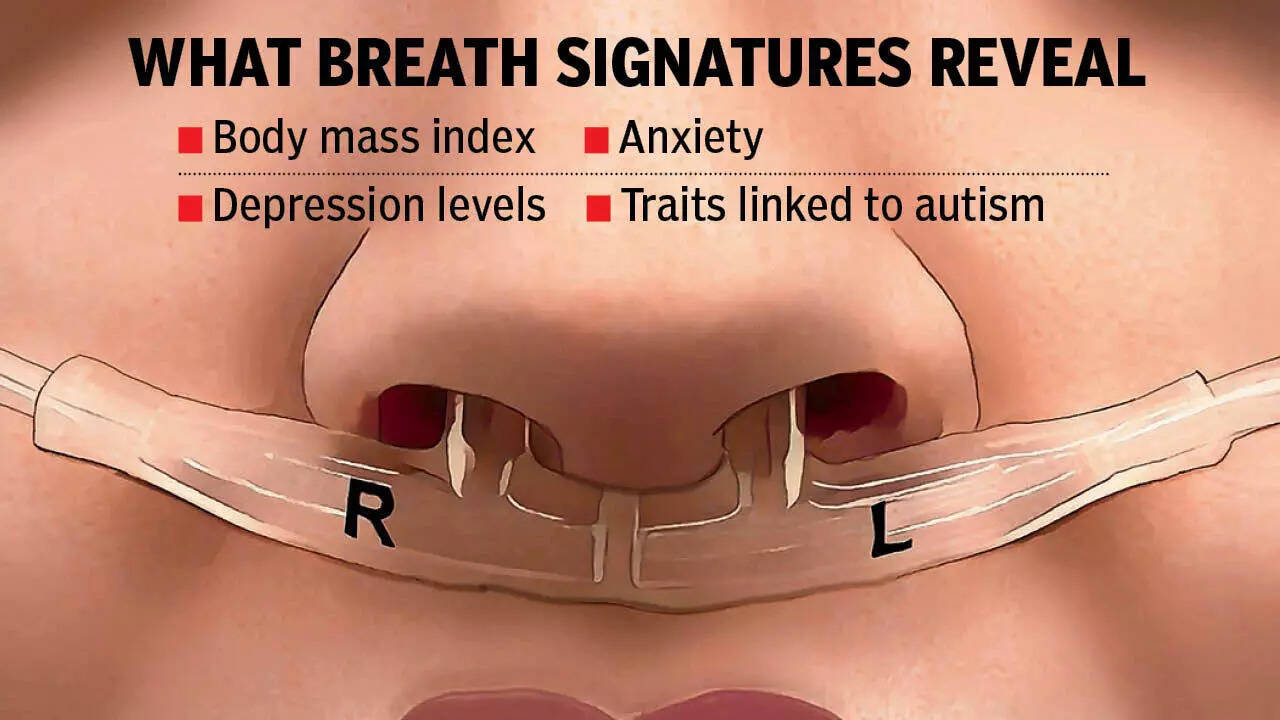Your thumbprint, the pattern of lines in the iris of your eye: These are known to be more or less unique to each person, including you, or at least specific enough to be useful for unlocking your phone. But in a paper in the journal Current Biology, researchers report that your patterns of breathing through your nose are so distinctive that it may be possible to identify you by breath alone, suggesting we have “breath prints.” The study was conducted in 100 people who wore sensors for 24 hours, and the technique proved effective in distinguishing among individuals more than 90% of the time.Most people rarely think about breathing, but for researchers who study smell, like Noam Sobel and his colleagues at the Weizmann Institute of Science in Israel, that regular cycle of in and out contains tantalising information about the brain. Each inhalation comes with a firing of sensory neurons and other cells involved in monitoring the environment, and Sobel and Timna Soroka, a graduate student at the institute, wondered whether it would be possible to identify individuals from long-term recordings of their breathing patterns. “We hypothesised, brains are unique, ergo breathing patterns would also be unique,” Sobel said.Soroka developed a wearable sensor that fits on volunteers’ upper backs, with tubes running around to capture the airflow out of each nostril. The researchers found that by using software to analyse a day’s worth of sensor information, they could tell people apart.

There’s more to a cycle of breath than just inhaling and exhaling. One person might have a very consistent pause just before each inhale. Another might pause some of the time and barely at other times. Someone might tend to exhale very quickly or sigh more frequently than another. For many people, one nostril might have a greater flow than the other for some of the day.The more measurements fed into the software, the better it was at identifying someone, the researchers found. These traits proved consistent over time; nearly two years after the first phase of the study, around 40 of the volunteers returned to do another recording and were as identifiable then as they were before.Diego Laplagne and Adriano Tort, neuroscientists at the Universidade Federal do Rio Grande do Norte in Brazil, said in an email that the work was “fascinating.” While there are better, quicker ways to identify individuals, they wrote, the study offers the promise of “understanding what’s behind the idiosyncratic breathing patterns.”Indeed, Sobel, Soroka and their colleagues found that it was possible to link subjects’ body mass index with features of their breath. They also found potential correlations between breathing patterns and subjects’ scores on questionnaires for assessing traits related to anxiety, depression or autism. For instance, people who scored high on depressive traits shared a tendency to exhale very swiftly, the researchers found.It is already known that breath might relate to mood. People with anxiety are frequently counselled to practice calming breathing exercises, for instance. But Sobel and Soroka wonder whether it might be possible to identify on a more granular level exactly what a healthier pattern of breath looks like, both to identify illness and to explore whether people can be taught ways of breathing that might change their biology. NYT news service